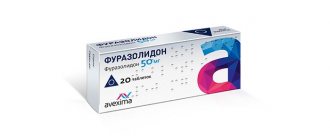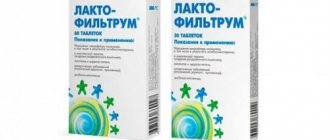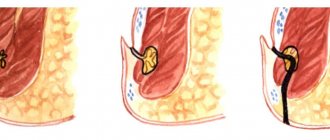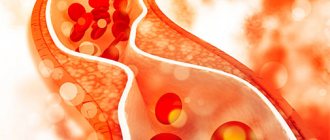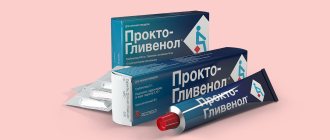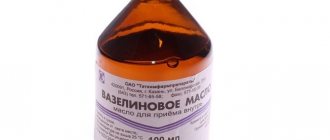Pharmacological action of the drug
The pharmacological action of furazolidone is aimed at combating microbes. It is also used as an antibacterial and bacteriostatic agent. This substance actively counteracts the activity of individual enzyme systems in bacteria. It is characterized by rapid absorption into the gastrointestinal tract. Actively distributed throughout the tissues of the body, right up to the central nervous system.
In the liver it is processed into an amino derivative. Up to 65% is excreted by the kidneys and, to a lesser extent, by the intestines.
Range of action: gram-positive cocci, protozoa such as Trichomonas and Giardia, gram-negative rods. Among the causative agents of various intestinal infections, the causative agents of paraphytes, typhoid fever and dysentery react most strongly to this substance. The causative agents of anaerobic and purulent infections are very slightly influenced. Addiction to the drug does not develop quickly.
Furazolidone 50 mg No. 10 tablet
Instructions for the use of the drug for specialists FURAZOLIDONE (Furazolidonum) Trade name Furazolidone International nonproprietary name Furazolidone Dosage form Tablets 0.05 g Composition One tablet contains the active substance - furazolidone - 0.05 g, excipients: milk sugar, potato starch, calcium stearate , aerosil. Description Tablets from yellow to greenish-yellow, flat-cylindrical, with a chamfer Pharmacotherapeutic group Other antiseptic and antimicrobial agents for use in gynecology. ATC code G01AX06 Pharmacological properties Pharmacokinetics When taken orally, it is well absorbed from the gastrointestinal tract. The maximum concentration of furazolidone in blood plasma after taking a dose of 100 mg is 0.25-0.43 mcg/ml and is achieved after 1.85-3.0 hours. It easily penetrates the placenta and the blood-brain barrier. It is found in therapeutic concentrations in urine and feces. It undergoes biotransformation in the liver to form an amino derivative. It is excreted from the body in the urine, with the proportion of unchanged drug being 65%, as well as in feces. Pharmacodynamics Synthetic broad-spectrum antimicrobial agent. It has a bacteriostatic and bactericidal effect. The mechanism of action is associated with the restoration of furazolidone in microbial cells under the influence of flavoprotein (in aerobic organisms) and ferredoxin reductase (in anaerobic organisms and parasitic protozoa) into an active intermediate that damages ribosomal proteins, disrupts the synthesis of protein, DNA, RNA. Active against gram-positive aerobic bacteria: Staphylococcus spp., Streptococcus spp.; gram-negative aerobic bacteria: Escherichia coli, Enterobacter spp., Helicobacter pylori, Klebsiella spp., Salmonella spp., Shigella spp., Proteus spp. Active against Enterococcus spp., fungi of the genus Candida. Active against the protozoa Trichomonas vaginalis, Giardia lamblia. The most sensitive to the drug are the pathogens of dysentery, typhoid and paratyphoid (Salmonella spp., Shigella spp.). It has little effect on the pathogens of purulent and anaerobic infections Pseudomonas aeruginosa, Acinetobacter spp. Microbial resistance to the drug develops slowly. Indications for use: dysentery, paratyphoid fever, food poisoning and acute bacterial diarrhea, eradication of H. pylori in the treatment of gastric and duodenal ulcers, chronic gastritis (as part of a second-line treatment regimen) trichomonas colpitis, urethritis, giardiasis. Method of administration and dosage The drug is administered orally, after meals, with plenty of water. Adults: 100-150 mg 4 times a day; course of treatment – 7-10 days. It is recommended to carry out treatment in cycles of 3-6 days with an interval of 3-4 days in the same doses. Maximum dose for adults: single dose – 200 mg, daily dose – 800 mg. For children, the drug is prescribed at a dose of 10 mg/kg/day in 3-4 doses. In the treatment of giardiasis, furazolidone is prescribed to adults at a dose of 100 mg 4 times a day. For trichomonas colpitis, combined treatment is carried out with furazolidone orally, 100 mg 3-4 times a day for 3-4 days, at the same time 5-6 g of powder containing furazolidone mixed with milk sugar in a ratio of 1:400-500 is administered intravaginally, suppositories with furazolidone are used rectally . Treatment is carried out daily for 7-14 days. When eradicating H. pylori in people with gastric and duodenal ulcers, chronic gastritis, furazolidone is used at a dose of 400 mg/day in 4 doses in combination with amoxicillin (2000 mg/day) and H+/K+-ATPase inhibitors in standard doses. The course of treatment is 10-14 days. (Second-line regimen recommended by the III Maastricht Agreement). Side effects - nausea, vomiting, anorexia - dizziness, polyneuritis - allergic skin reactions (in the form of skin rash). Contraindications - severe renal dysfunction, renal failure, oliguria - glucose-6-phosphate dehydrogenase deficiency; - acute porphyria - children under 2 years of age - first trimester of pregnancy - hypersensitivity to furazolidone. Drug interactions Urine alkalizing agents (sodium bicarbonate, trisamin) reduce the effect of furazolidone (by accelerating its excretion in the urine), and urine acidifying agents (amino acid solutions, ascorbic acid, methionine, potassium orotate) increase it. Aminoglycosides and tetracyclines enhance the antimicrobial effect of furazolidone. When used together with chloramphenicol and ristomycin, it enhances the hematotoxic effect (the ability to inhibit hematopoiesis) of these drugs. It has a disulfiram-like effect, sensitizing the body to the products of ethanol metabolism. During treatment with furazolidone, the use of drinks containing alcohol is contraindicated. Furazolidone inhibits MAO; when using it, fermented foods containing tyramine (red wines, smoked meat and meat products, oysters, soft cheeses, chocolate, products with soy protein) should be excluded from the diet. Acidic fruit juices enhance the effect of furazolidone, up to the possibility of developing a toxic effect. When used together with antidepressants from the group of MAO inhibitors (nialamide, tranylcypramine, moclobemide), tricyclic antidepressants (imipramine, amitriptyline), sympathomimetics (ephedrine, cocaine), there is a risk of developing a hypertensive crisis. B vitamins weaken the neurotoxic undesirable effects of furazolidone. Special instructions Caution when prescribing should be observed in persons with electrolyte disturbances, impaired renal function, deficiency of B vitamins, because the neurotoxic effect of the drug may be enhanced. Pregnancy and lactation The use of furazolidone in the second and third trimester of pregnancy is possible only after a careful assessment of the benefit/risk ratio for the mother and fetus. If it is necessary to use it during lactation, the child should be weaned from the breast for the entire period of treatment. Use in pediatrics Not recommended for use in children under 2 years of age Effect on the ability to drive vehicles and operate machinery In therapeutic doses, furazolidone does not have an undesirable effect on the ability to drive a vehicle or other operator activities. Overdose When high doses are administered, neurotoxic reactions, polyneuritis, acute toxic hepatitis, and disorders of the hematopoietic system may occur. Helpful measures: discontinuation of the drug, taking large amounts of fluid to increase the excretion of the drug in the urine, hemodialysis, symptomatic therapy (antihistamines, B vitamins). There is no specific antidote. Release form and packaging 10 tablets in a contour-free packaging. Contour cellless packages, together with the appropriate number of instructions for use in the state and Russian languages, are placed in a group package. Storage conditions Store in a dry place, protected from light, at a temperature of 5 to 30 ºС. Keep out of the reach of children! Shelf life: 3 years Do not use after expiration date. Conditions for dispensing from pharmacies By prescription, Republic of Belarus. Minsk region, Borisov, st. Chapaeva, 64/27
Indications for the use of furazolidone
Furazolidone is prescribed in case of the following diseases:
- dysentery;
- shigellosis;
- trichomoniasis (if the use of nitroimidazoles was unsuccessful);
- giardiasis;
- paraphytes;
- food intoxication;
- burns and wounds that have become infected:
- diarrhea;
- trichomonas colpitis;
- urethritis;
- cystitis;
- pyelitis.
Side effects of use and drug overdose
Side effects of furazolidone include:
- nausea with possible vomiting;
- the likelihood of loss of appetite to the stage of anorexia;
- Allergic reactions may occur (skin rash, itching, hyperemia, etc.).
The toxicity of the drug is very low. If the medication dose is exceeded, hematotoxicity and polyneuritis may develop. Acute toxic hepatitis occurs.
In case of an overdose of furazolidone, you should stop taking it, perform gastric lavage, and start taking B vitamins and antihistamines. Calcium chloride is also prescribed.
Dosage
The tablets are taken after meals. They need to be swallowed and washed down with at least 100 g of liquid. The dosage depends on the pathology that requires treatment, as well as on the age of the patients.
The effectiveness of the drug in the treatment of dysentery and food poisoning has been proven. In this case, tablets are indicated in the following quantities depending on the age factor:
- For adults - 2-3 pieces. It is allowed to take 4 times a day, but the maximum dose should not exceed 800 mg.
- For children - the daily amount is calculated at the rate of 6-7 mg/kg body weight. Distribute it into 4 doses.
When treating giardiasis, adults usually take 2 tablets 4 times a day. Calculation of the daily amount of the drug for children is 6 mg/kg body weight. The duration of taking furazolidone for the treatment of any disease should not exceed 10 days. In most cases, a positive effect is achieved within 2-5 days. If after 7 days no improvement is observed, this indicates that the causative agent of the disease is refractory to the effects of the drug. This means that other antibacterial agents must be used for treatment.
Contraindications to the use of furazolidone and restrictions
There are a number of reasons why furazolidone cannot be prescribed:
- individual sensitivity to the components of this drug;
- end stage of a disease such as chronic renal failure;
- if the child has not reached the age of 1 month;
- deficiency of glucose-6-phosphate dehydrogenase.
The use of this drug is limited in cases of liver disease or the nervous system as a whole. During pregnancy, medication must be taken strictly under the supervision of a doctor. It is he who makes the decision on the prescription, weighing all the possible risks and the degree of possible benefits of the drug.
Due to the ability of furazolidone to pass into breast milk, breastfeeding should be discontinued.
